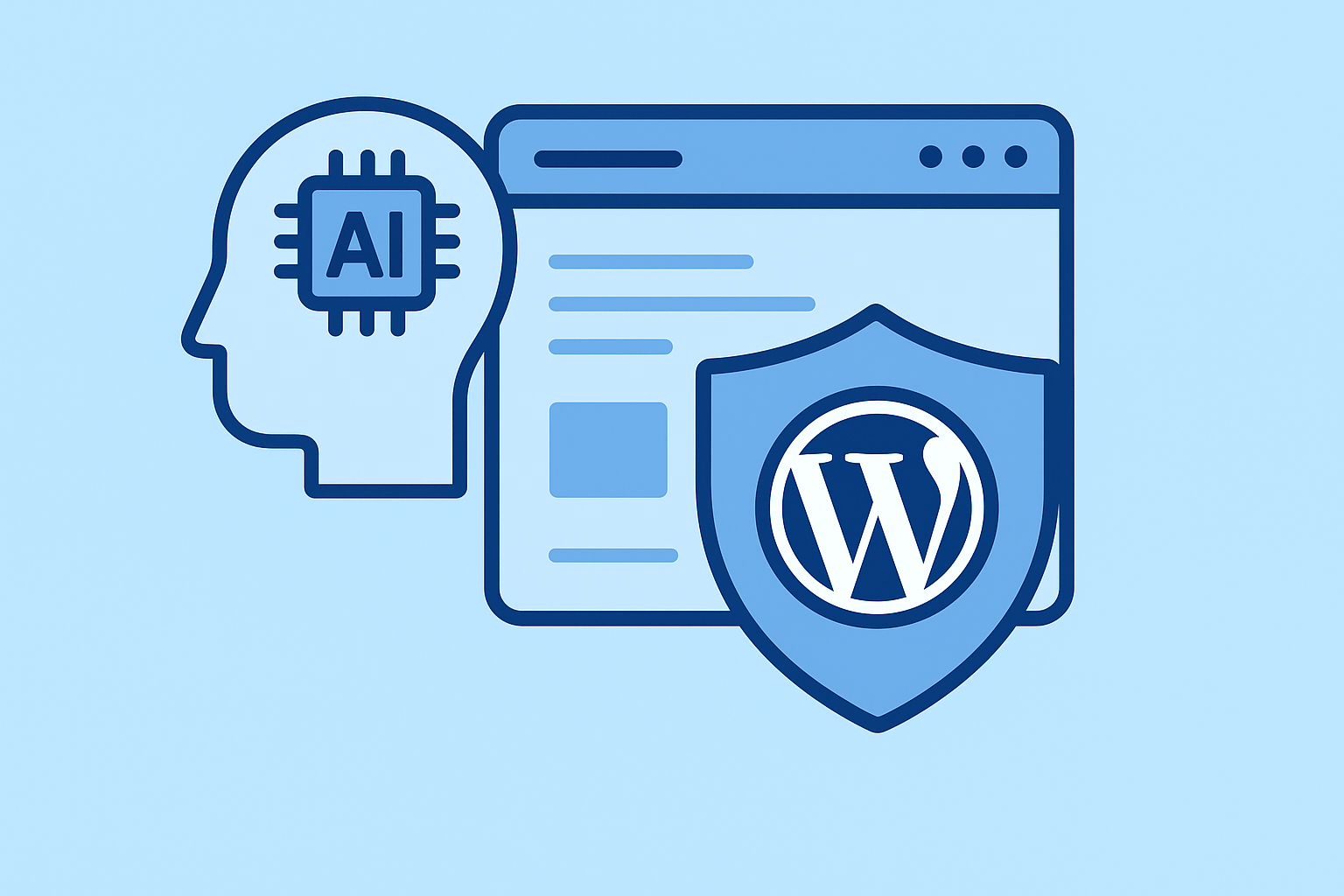AI Meets WordPress Security: How Machine Learning Detects Threats Before They Strike
Introduction
WordPress powers more than 40% of the internet — and that makes it a prime target for hackers. But in 2025, artificial intelligence is changing how we protect WordPress sites. Using machine learning, security systems can now detect and neutralize threats before they even happen.
This isn’t the future — it’s happening right now.
1. The New Era of Predictive Security
Traditional security tools rely on databases of known malware or attack patterns. If a new threat appears, those systems might miss it until the next update.
AI-powered security, on the other hand, learns from behavior — not just from known signatures.
For example, solutions like Wordfence and Sucuri are experimenting with anomaly detection algorithms that flag suspicious activity such as:
- Unusual login attempts or patterns
- Unexpected file changes
- Abnormal PHP or SQL queries
Machine learning allows these tools to catch “zero-day” attacks — those that exploit vulnerabilities unknown to developers.
2. How AI Analyzes WordPress Activity
AI security systems rely on a few powerful models:
- Behavioral analysis: Detects deviations from normal admin activity or traffic patterns.
- Pattern recognition: Identifies repeating signs of intrusion across thousands of sites.
- Natural language processing (NLP): Scans code or logs for malicious intent or injected content.
These models are constantly updated using crowdsourced data from millions of WordPress sites — meaning the entire ecosystem learns faster than any single developer could.
3. AI-Powered Firewalls and Malware Detection
Modern WordPress firewalls are no longer static.
Platforms like Cloudflare and AWS WAF use AI to analyze billions of requests per day, identifying malicious IPs, bots, and payloads.
AI can:
- Block suspicious requests automatically
- Recognize bot networks through behavior
- Detect phishing or injection attempts in real time
By learning from every attack, AI-driven systems make WordPress security proactive, not reactive.
4. The Role of Local AI in WordPress Plugins
Some innovative WordPress plugins are embedding AI directly into their code.
For example, AI-based scanners use local models to:
- Detect suspicious code in themes or plugins
- Monitor plugin integrity after updates
- Automatically quarantine or roll back compromised files
The combination of local and cloud AI gives users real-time protection without sacrificing speed.
5. The Future: Autonomous WordPress Security
The ultimate goal is a self-healing WordPress — a site that fixes itself automatically.
In this model, machine learning agents could:
- Detect and patch vulnerabilities
- Revert malicious file changes
- Update plugins intelligently based on risk level
By 2025 and beyond, AI security plugins will act like digital immune systems — constantly learning, adapting, and protecting.
Conclusion
The integration of AI and machine learning into WordPress security is transforming how we defend websites.
Instead of waiting for attacks to happen, smart systems now predict and prevent them.
For WordPress developers and site owners, that means peace of mind — and a safer web for everyone.
🔍 Yoast SEO Settings
- Slug: ai-wordpress-security-machine-learning
- Meta Title: AI Meets WordPress Security: How Machine Learning Detects Threats Before They Strike
- Meta Description: Learn how AI and machine learning are transforming WordPress security in 2025. Discover predictive protection, smart firewalls, and self-healing websites.
- Focus Keyphrase: AI WordPress security
- Tags: WordPress security, AI, machine learning, WordPress plugins, predictive protection, cybersecurity, Wordfence, Sucuri, Cloudflare, AWS WAF, malware detection, serverless WordPress, WordPress 2025, self-healing sites, WP security tools




